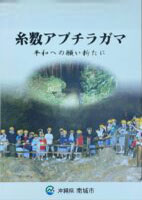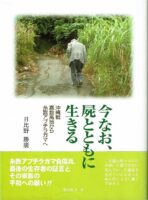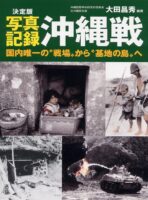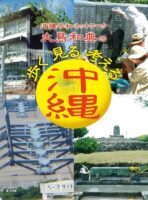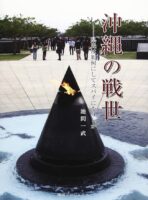Lieutenant, Medical Officer Morimasa Nishihara (29 Years Old Then)
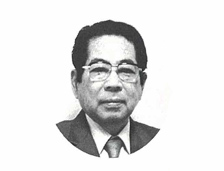
The Hopeless Battle of Okinawa
I was working as a medical officer in the Take Unit, in Manchuria when I was assigned to join the Battle of Okinawa in July 1944. The same year, after the bombing of October 10th, Naha was burnt to ashes. I ended up in the 3rd surgery division of the Okinawa military hospital. Around the end of December, the Take Unit was transferred to Taiwan. I was given orders to return with the 600 discharged patients on the last boat. But the war situation got worse, and there was no Boat left to carry the patients. Eventually, they were transferred to different units in Okinawa.
Medical officers should have come back immediately by plane, but there were no available planes at that time. I had to remain in the 3rd surgery division. On April 1st during the lull in the battleships' bombing, I went to Tsukazan Medical Unit and begged for my transfer to the Okinawa Unit. In 1945, when the US army landed on the west coast of the main island of Okinawa, the confrontation became very certain and there were more and more casualties. On May 10th I finally received my transfer order. I was attached to the Okinawa military medical division and finally had my own unit. I felt really happy and relieved. With Pharmacy 2nd Lieutenant Takatori, Sergeant Fujii, and 7 or 8 other soldiers, we drove a truck without lights in the middle of the night, surrounded by the enemy flare bombs, to reach the Tamagusukuson Itokazu shelter trench. The apprentice medical officer Oshiro was already there as a member of the advance party. Fourteen Himeyuri students, brought on May 1st by Doctor Chizen Oshiro were also there, with some nurses devoted to extremely hard duties.The Itokazu trench was a large natural cavern, a perfect shelter for injured soldiers against the battleships' bombing. Although there was heavy bombing and flare bombs on Haebaru, all was quiet in Itokazu. When I arrived, the trench was totally dark. There was a generator, but I suppose nobody knew how to use it. While the war was raging, casualties from the front became innumerable and those who received first aid on the front were carried there day and night.
Everything was improvised. There were neither beds nor any equipment such as boards and pieces of wood, or cars, or any supplies from the headquarters. How could our 7 or 8 soldiers build beds for all the patients? Everyone was stressed and worried. We asked the medics to gather some materials in the village of Itokazu. We improvised a few beds. We were less than 10 men, so I asked the medics to gather some materials in the village of Itokazu. We prepared and distributed meals, attended the patients, disposed of feces, among howling and screaming men. In the beginning, Doctor Oshiro and I would treat injured soldiers day and night. without any rest until the old civilian practitioner Doctor Yafuso came to help us. He was a great help indeed.
Unfortunately, inside the trench, the ground turned into mud, due to the drops of water falling from the cave ceiling, causing encephalopathic fever and convulsions in our patients. People would fall from their built beds. Himeyuri schoolgirls had to announce deaths with their sad voices. The trench was a picture of Hell. Since we didn't have enough medicine and surgical tools, only a few surgeries were done. I did not administer pain relief or blood transfusions. I used to walk around with a small light bulb attached to a small battery to treat the injured soldiers, but since I hadn’t received a lot of medicine, it was difficult to treat patients.
Many injured men were saved thanks to the well inside the trench. One day, soldiers from the artillery came. They stuffed explosives in bamboo tubes to destroy the cannons they hid in the sugar cane fields, so that the enemy couldn't use them. They left the trench and we never knew what happened to them.
There were so many injured people in the Itokazu trench that we couldn 't count them: probably 500 to 600 persons. It took time to give each wounded soldier his one rice ball meal. Soldiers, nurses, and Himeyuri schoolgirls made desperate efforts to give first aid in spite of the misery, exhaustion, and fear they were going through.
On May 25th, the war situation suddenly changed, and the enemy's attack progressed close enough to our area. Like the Haebaru hospital, we received orders to retreat immediately to the Mabuni region: "The war situation becoming worse, the hospital will retreat immediately to Mabuni. The Itokazu quarters must retreat immediately to Mabuni by tomorrow as well. Regarding the transportation of injured persons, the ladder corps will help. So, be prepared.” When I received the order, I told all members of the medical unit to be ready. I lost my patience and sent the two junior soldiers Takamine and Nagayoshi, who were native and well aware of the region, to the Haebaru hospital, under a hail of bullets. When they arrived,he the manager of the hospital’s general affairs was just about to leave, in the middle of an urgent retreat. They reported later that when they tried to speak to him, he just said: "You haven't retreated yet? Retreat immediately to Mabuni,” when they reported those words to me, I was very surprised to hear the situation had suddenly turned so bad.
I immediately called the officers, explained the situation and told them the order we received:“We must retreat to Mabuni today.” We had only a few soldiers and equipment, and our capacity for transportation was highly insufficient. Moreover, we couldn't rely on the hospital ladder corps' assistance. What should we do? People as we were, all by ourselves. Those who couldn’t move on their own stayed put and would get support from our hospital, while those who could move needed to go to Mabuni. The junior soldier Nagayoshi said he would rather stay behind to look after his uncle who was one of the patients. Therefore, the injured soldiers who could walk, the nurses, the medics, and the Himeyuri schoolgirls, all left at midnight and went south. But they all walked separately and we never knew how many seriously injured persons stayed. This retreat has always been one of my saddest memories, involving many tragedies and unreasonable decisions.Our Itokazu quarters retreated from the Itokazu trench and we all stayed a while in the Itoshu safety trench in the south, the trench where the "Monument of the 2nd Surgery Division'' is located, in today's Itoman City. However, a few days later, the Itokazu quarters received the order of dissolution. It was dissolved there. The same day, I was assigned as manager of the hospital's office and appointed to the trench the same evening. On the morning of that day, the hospital Director Hiroike injured his lower leg. When I visited him, he was in a coma. I sewed him up as well as I could, but he had gas gangrene. The assistant director, Major Sato, amputated his lower leg, but Director Hiroike still passed away.
By chance, a fellow countryman, Motohide Kishimoto came to visit me. He was a good friend of mine. He was a military policeman and gave me secret information about the army. According to him, the military commander's conference had given orders the day before. He told me this information was reliable since he attended the military commander's conference. So far, I had always believed we would win the war, and never imagined we might lose. I was stunned and just stood staring at him. "Besides, he said, the military police are likewise dissolved and free to act. If we lose this war and die now, we will die in vain." "We are going to break through Kunigami.”he said, laughing.
Later on, I met Major Sato and suggested that we dismiss the Okinawa military hospital, because I agreed with Kishimoto's belief that there was no other choice than the Kunigami breakthrough. Thanks to Kishimoto, I was aware of the outcome of this hopeless war long before everyone.
The US army pressure was surging like an anger wave and we lost all contact with the military commander. Considering the war situation, I thought it was the ideal opportunity to escape via Kunigami. But if we moved as a group, we would become an easy target whereas if we moved individually, the Kunigami breakthrough might succeed and we might be able to see our families again. Thinking about that, I urged Major Sato to dissolve the hospital. He pondered on the idea for a while and finally strongly agreed with me, saying: "OK, let's dissolve!" I was so happy that I shouted: "It's the dissolution! It's the Kunigami breakthrough!" The hospital was dissolved at midnight on June 18th.
Looking Back Upon a Senseless War
We were only 10 soldiers, arranging the trench with no materials, and a few Himeyuri schoolgirls…
All these injured soldiers from the Battle of Okinawa , hundreds of people, treated and nursed, some condemned… Everything was hopeless…
We had to transport to Mabuni on the same day hundreds of people without any means, any assistance or any materials. That order was senseless…
But even though we knew it was senseless, we summoned our strength without any protest. How many lives were lost for such a stupid ending?
I know now how sweet peace is.





